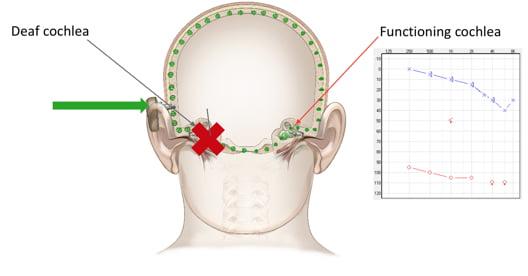Welcome to our in-depth exploration of unilateral hearing loss, a condition that impacts many individuals but often goes unnoticed. At Vr Speech And Hearing Clinic, we are committed to providing you with accurate and comprehensive information to enhance your understanding of this auditory challenge.
Unraveling the Mystery of Unilateral Hearing Loss
What is Unilateral Hearing Loss?
Unilateral Hearing Loss (UHL), commonly referred to as single-sided deafness, occurs when an individual experiences hearing impairment in only one ear. Unlike bilateral hearing loss, where both ears are affected, UHL poses unique challenges that can impact various aspects of daily life.
Causes and Risk Factors
Understanding the root causes of UHL is crucial for effective management. Common causes include genetic factors, infections, trauma, and noise exposure. Identifying and addressing these factors early on can significantly improve outcomes.
The Impact on Daily Life
Communication Challenges
One of the most noticeable effects of UHL is the difficulty in communication. Individuals with UHL often struggle in noisy environments, where background noise can make it challenging to discern speech. This can lead to social withdrawal and a decreased quality of life.
Educational Implications
For children with UHL, navigating the educational landscape can be particularly challenging. The condition may impact academic performance, social interactions, and overall learning experiences. Recognizing these challenges early allows for tailored interventions and support.
Diagnosing Unilateral Hearing Loss
Audiological Evaluation
Accurate diagnosis is the first step toward effective management. Audiological evaluations, including pure-tone audiometry and speech audiometry, help determine the extent and nature of the hearing loss. Timely diagnosis enables prompt intervention and improved outcomes.
Management and Treatment Options
Hearing Aids
For many individuals with UHL, hearing aids prove to be a valuable solution. Technological advancements have led to the development of specialized devices that enhance sound localization and speech clarity, compensating for the lack of hearing in one ear.
Cochlear Implants
In cases where traditional hearing aids may not suffice, cochlear implants offer a more advanced solution. These implants directly stimulate the auditory nerve, providing a sense of sound to individuals with severe hearing loss in one ear.
Coping Strategies for Daily Life
Auditory Training
Engaging in auditory training exercises can help individuals with UHL improve their ability to understand speech in challenging environments. These exercises focus on enhancing auditory processing skills and adapting to the unique aspects of single-sided hearing.
Conclusion
In conclusion, unilateral hearing loss is a nuanced condition that requires a thorough understanding for effective management. By delving into its causes, impact on daily life, diagnostic processes, and available treatments, we aim to equip you with the knowledge needed to navigate this auditory journey successfully.

